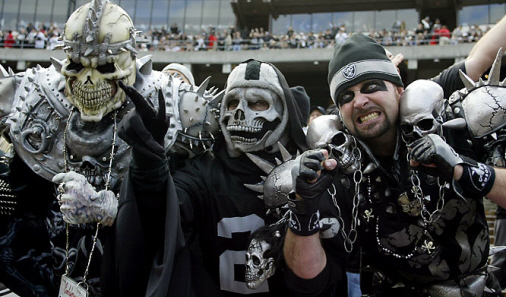| The 12th Man originated at Texas A&M University in
1922 when the Aggies, up against the nation's top ranked team, Center College, were down to their
last set of players without any additional reserves. The Aggies's coach, Dana X. Bible, remembered a
former football player who had decided only to play basketball that year, and called him out from
the stands to don a football uniform and stand along the sideline ready to relieve any one of the 11
players on the field. This player was E. King Gill. Although he never actually went onto the field to
play his image as the last man standing, ready to fill in at any moment, to serve and support the team
encapsulated the spirit of the student body. The Aggies won their game that day 22-14 and thus began
the tradition of the 12th Man. The entire student body now always stands during the entire game in
support, embodying the Twelfth Man as he is always ready to be called upon if needed. This act of
support is a common gesture amongst spectators and fans of every sport, with each team's fans creating
their own specific gesture.
You can see it every Friday night or Sunday afternoon, during the Olympics and even at a local little league game.
Spectatorship and fandom is a natural component of sports. It allows non players to participate and engage in the
game and experience the excitement and victory as though they were a member of the team on the field. "By becoming
fans, spectators engage in certain kinds of 'pleasures,' fulfilling their own desires through fetishism, voyeurism,
and narcissism" (Duncan and Brummett, qtd. in Kraft and Brummett, 21). I chose to highlight the history of the Aggie's
12th man, because essentially all fans are performing the identity of the 12th man when watching their team play.
|
| There are definitely degrees of devotion and commitment of the 12th man as some fans are "diehard" and completely
loyal to the very end sitting through freezing temperatures, snow, rain and in Texas, extreme heat. There are the notoriously more boisterous and brazen fans and there are also less involved fans that perhaps
are only accompanying the diehard fan. Regardless, of their degree of devotion one thing they all have in common is that they use their bodies as
a canvas to display and perform this identity and to participate in this sports culture. Rachel Kraft and Barry Brummett identify repeated
elements of performance such as shedding of clothing, painting faces
and bodies in team colors, and putting on funny hats in hopes that the camera will find them (21).
The painting of faces and bodies has long been part of human evolution and continues to exist today as tradition and ritual.
Joseph Jordania's perspective that the painting of the body along with dancing, chanting, stomping and singing done by human
ancestors before battle as a ritual to unite a group of people ("Body painting") can be applied to the actions of fans that
do the acts in celebration and support of an athletic event. These shared practices based on values and cultural history,
or habitus, have formed a specific cultural literacy of fanaticism. The fans know the official and unofficial rules of spectatorship.
Fans know how to decorate their bodies, the sports jargon, nicknames given to players, the overall discourse surrounding sports spectatorship
and the characteristics of appropriate and encouraged behavior. "Being a fan is about consuming a brand of figure, athleticism, or
ideals with which a fan identifies" (Kraft 21). For men this may mean exhibiting their masculinity through male dominant conduct such as sports
fanaticism and sports rioting (Falk, 152). Surprisingly, research has found that fans are more likely to act out aggressive behavior in celebratory expressions than in losses (Dietz-Uhler, 109).
When they take part in spectating a sporting event, they they experience pleasure in enjoyment and entertainment from the competition and adrenalin of the game.
Because the nature of the sport is so quick and continuous, audiences are continually seeking more images and because they are so fleeting, they are able to watch game after game.
The advances in technology that allow for instant replays, close ups, and recording help satisfy that desire. Secondly, while observing
the athleticism and physicality of the players on the team, they identify with the player and imagine themselves to be on the field as well or relate the
images to an experience in their own life which Duncan and Brummett refer to as a third type of viewing which they label narcissistic looking (198).
|





